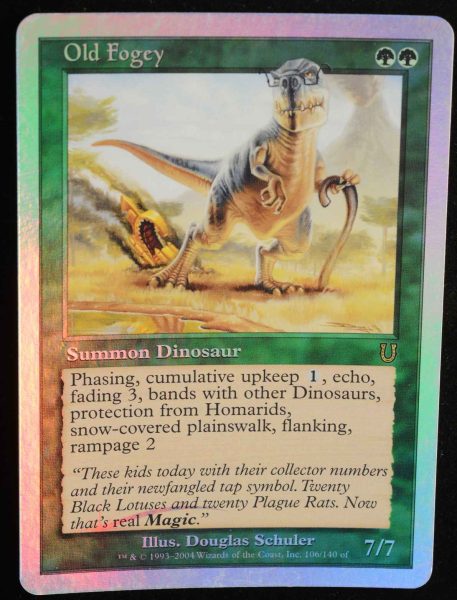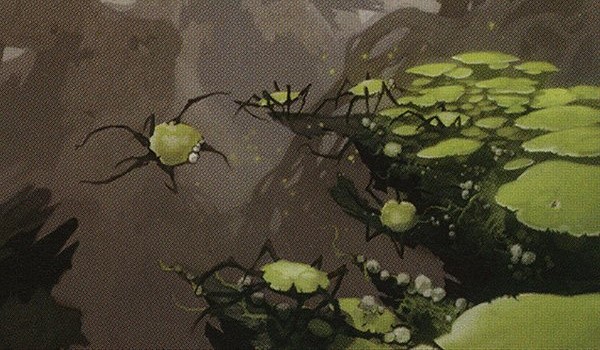Are you a Quiet Speculation member?
If not, now is a perfect time to join up! Our powerful tools, breaking-news analysis, and exclusive Discord channel will make sure you stay up to date and ahead of the curve.
Last week, we discussed the origins and development of two creature types unique to the Magic franchise: Kithkin and Nightstalker. They were both introduced to the game in June 1994, with the arrival of Legends. Today, Magical Creatures will take us forward just by a few months, until the advent of Fallen Empires (November 1994).
The fifth expansion of Magic: The Gathering was not part of any block, and introduced four new creature types meeting our criteria. But wait, why are we moving from the third set straight to the fifth? As you may know, the fourth set was The Dark, but it failed to introduce new creature types. Well, it didn't really fail at that (it introduced 32), but none of them were unique to Magic.
In fact, half of them were later changed to Human, and the rest weren't new to begin with (Leech, Shark, Bird and so on). Someday, we might even explore the little-known abyss of weird creature types that were abandoned over the years... but that's an article for another series!
Fallen Empires
Back to Fallen Empires. Sold in 8-card booster packs, it's a famously overproduced set. As a consequence, it's still one of the least expensive expansions today. In the last couple of years it has started rising, but just a few years ago it was possible to get a booster box for as little as $100.
As such, it's frequently associated with Homelands, although the reason for their low demand is slightly different. While the problem with Fallen Empires was mostly overproduction, Homelands marked an all-time low from the perspective of game design.
Fallen Empires is not renowned for its power level, either, but at least it gave us Constructed staples like High Tide, Hymn to Tourach and Goblin Grenade. All of them are very powerful spells in their respective colors, and the first was crucial for the birth of storm combo deck Solidarity.
Onto the four unique creature types that this set introduced: Homarid, Thrull, Orgg, and Saproling. The latter, as with Tetravite, only appears on tokens. Funnily enough, Saprolings are by far the most successful and well-known of these types. Which perhaps says a lot about how well players received the other three.
Homarid
Homarid is a weird creature type. The art of any Homarid is easily recognizable, as they are basically giant, sapient lobsters. Besides, it's not technically a creature that was invented for Magic, since Homaridae is just the scientific name for large-clawed lobsters. Anyway, I'm including them in this series because I think they deserve it. You don't see giant shellfish with human intelligence every day, do you?
Eight different creatures with the type Homarid exist today, and they are all blue. Four of them (which you can see below) were printed in Fallen Empires. Then we got Viscerid Drone from Alliances, Viscerid Deepwalker from Time Spiral, and Homarid Explorer from Dominaria. The eighth card is actually a playtest card from Mystery Booster, and is thus illegal in any format except for Limited. It's worth mentioning, though, as Khod, Etlan Shiis Envoy would make for a great Lord.
Not much to say about Homarids. I find them pleasant, and would be happy to build a tribal, if only they were a little more numerous. And a little less weak, maybe. Unfortunately, they are all unplayable in any format. In fact, they are so bad that silver-bordered Old Fogey (from Unhinged) has protection from Homarids as a joke.

The only exception is Viscerid Deepwalker, which was a good pick in Time Spiral booster drafts. But then again, every creature with Suspend 1 was decent in that format. What else? Homarids' offspring is called Camarid, but we won't touch them for a while, since they only showed up with Time Spiral.
Thrull
The Thrulls usher us into a different realm, as they are new creatures without any doubt. They are also a bit more common than Homarids, with 24 different Thrulls having been printed over the history of Magic. If Homarids were all blue, Thrulls are mostly black, with some examples in white, too. And one exception, which is both black and red.
In any case, as you can see from the gallery below, they are very black creatures. I personally find them among the most disgusting creations of this game, from an artistic point of view. Which is reasonable, given the fact that they are creatures made from dead flesh.
Again, not a very strong or successful creature type. Many of them share an activated ability whose cost is to sacrifice them. They even have a Lord (unlike Homarids), but Thrull Champion is just unplayable. Some cards were pretty good in Limited, back when the original Ravnica block came out, but that's not because they are Thrulls.
It's just because they are pingers (Rakdos Ickspitter), because they tap creatures (Ostiary Thrull), and because they have flying and lifelink (Mourning Thrull). And you would always play these types of cards in a booster draft, no matter the creature type.
To sum up, with Thrulls it would be technically feasible to create a tribal deck without leaning too heavily on Changelings. Does this mean it would be advisable? Perhaps, but only if you want a deck with the most awful-looking creatures you can find in this game!
Orgg
Orgg is another totally new creature type. As with Homarids, there is a card simply named after the type itself. In this case, you guessed right, I'm thinking of Butcher Orgg. But what is it? Only four Orggs exist so far, they are all red, and they look like half-breeds between Orcs and Ogres.
Orggs are quite easy to spot, since they all have the word Orgg in the name and they all boast two pairs of arms. The first one was printed in Fallen Empires. The second, Trained Orgg, came with starter-level edition Starter 1999. Then it was the turn of Soulgorger Orgg (Judgment, 2002). And finally, in 2003, came Butcher Orgg, with Onslaught.
What do they have in common, apart from too many arms and an ugly face? They are all 6/6 and cost either five or seven mana to cast. That's it. Orggs would probably win the prize for the least playable creature type, at least among the ones we are discussing this week.
Saproling
Let's get to the best part: Saprolings. As we mentioned earlier, not a single creature was printed with the type Saproling. And still, this is by far the most interesting, playable and widespread of today's creatures. How come? The fact is Saprolings are tokens, and almost 80 cards exist with the ability of creating such tokens. Saprolings are "artificially made plant creatures," and they come in many forms, as stated by Mark Rosewater.
The cards able to create Saprolings are mostly green, although we also have rare examples in other colors. Over 20 of them are creatures with the type Fungus. This is why most of us immediately link Fungus and Saproling together. Back in 1994, when Fallen Empires came out, only a few cards existed with this ability. Think of the original Fungus, called Blightreaper Thallid // Blightsower Thallid, which set the standard for this type of card.
But a huge number of new Thallids were created with the advent of Time Spiral, 12 years later. As former member of Magic R&D Devin Low explained here, they were looking for two major themes: nostalgia and time as a resource. What else would have worked better at linking together these two concepts? And this is why Thallids were brought back after a long rest, to the elation of Saproling lovers.
Broken Saprolings' Creators
What of playability and power level? No doubt, we are on an entirely different level from the previous three cases. So many cards exist with the power to make Saproling tokens, and so cohesive is such an ability within the color green, that Magic players really have endless ways to build decks based on this theme. They don't really have many chances to redeem themselves from the kitchen table, but that's still much better than the other three types we have just seen.
Since we have been mentioning Limited play quite a lot in today's installment, let's wrap it up with one of the most powerful cards ever printed (at least when it comes to booster draft). You may not know this just from looking at the card, unless you were playing back in 2007, but Sprout Swarm was by far the best common in the format, and among the best cards ever to first pick.
It's a win condition, it's splashable, and it combines convoke and buyback. Printing it at common was acknowledged as a mistake. Mark Rosewater himself had to explain why they didn't reprint it in Time Spiral Remastered. Do note that they considered printing it at uncommon, then at rare, then even at mythic rare. Eventually, they realized "it was causing more problems than it was worth" and just pulled it from the set.
Fates Intertwined
In today's installment, we saw four very different creature types. Each of them is linked to a specific color, and they had very different fates in the years following their creation. Some, like Orggs and Homarid, didn't get past 10 cards. Others, like Thrulls and Saprolings, had better luck.
What they all share is that typical old-school quality that all cards from those days possess. For this reason, they were all brought back with Time Spiral, given its interest in Magic's past. And three of them even appear on the same card: Sarpadian Empires, Vol. VII.
This artifact represents the final tome of a seven-book series named Sarpadian Empires. A huge number of cards from Fallen Empires quote this series in their flavor text, but this is the only card directly named after the book. It can create Citizen, Camarid, Thrull, Goblin, or Saproling tokens, depending on what you choose when it enters the battlefield.
Unfortunately, we didn't touch Citizens and Goblins, as they were definitely not created for Magic. Nonetheless, they are characteristic creatures for their respective colors. What would you choose among the five? Let us know in the comments or on Twitter!
























